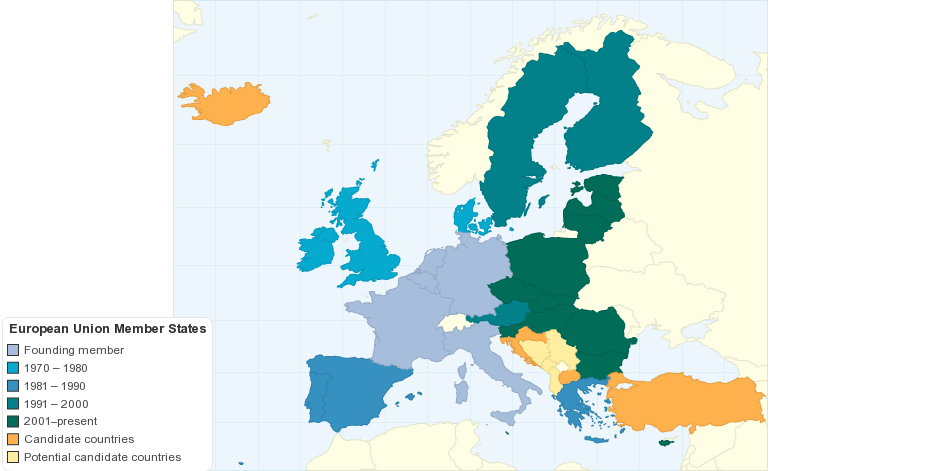This map shows current member states of the European Union by their year of entry. The European Union (EU) is an economic and political union of 27 member states which are located primarily in Europe.
How does a country become a Member of the European Union?
A country must meet the Copenhagen criteria. The Copenhagen European Council of June 1993 defined the criteria as:
- the stability of institutions guaranteeing democracy, the rule of law, human rights and respect for and protection of minorities (political criterion);
- the existence of a functioning market economy as well as the capacity to cope with competitive pressure and market forces within the EU (economic criterion);
- the ability to take on the obligations of membership including adherence to the aims of political, economic and monetary union (criterion concerning adoption of the Community acquis)
What are the advantages of being a part of the European Union?
The EU has developed a single market through a standardised system of laws which apply in all member states, and ensures the free movement of people, goods, services, capital, the euro (the single European currency), safer food and a greener environment, better living standards in poorer regions, joint action on crime and terror, cheaper phone calls and millions of opportunities to study abroad, including the abolition of passport controls by the Schengen Agreement between 22 EU states. It maintains common policies on trade, agriculture, fisheries and regional development and enacts legislation in justice and home affairs. Sixteen member states have adopted a common currency, the euro, constituting the eurozone.
Following table below shows list of European Union Member States
15 years ago

